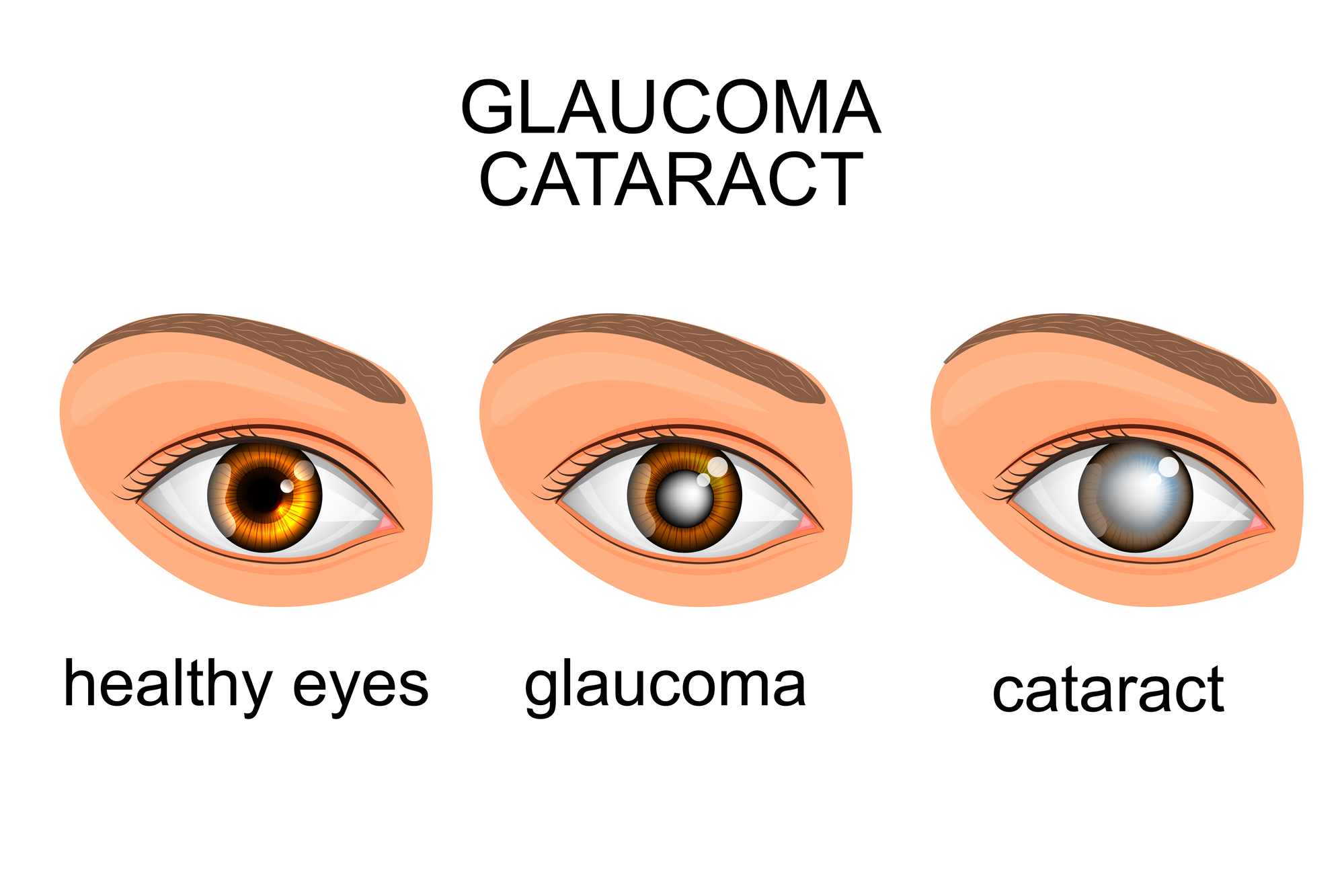Updated on June 10, 2025
What is Contrast Sensitivity?


Vision Center is funded by our readers. We may earn commissions if you purchase something via one of our links.
Contrast sensitivity is the ability to distinguish between an object and the background behind it. It differs from visual acuity, which measures the clarity of your vision at a distance.
You can have excellent visual acuity but reduced contrast sensitivity and vice versa. Decreased contrast sensitivity can be a symptom of a refractive error and other eye conditions, such as:

Let’s discuss why it’s important to have good contrast sensitivity, how to measure it, and treatments available if you have poor contrast sensitivity.
What are the Symptoms of Reduced Contrast Sensitivity?
People with reduced contrast sensitivity may experience:
- Poor vision while driving at night
- Difficulty seeing curbs and steps
- Eye strain from watching TV or reading
- Images that appear washed out
- Inability to identify the food on their plate
Why is It Important to Have Good Contrast Sensitivity?
Contrast sensitivity is an important aspect of your visual function, especially in low-light situations. Good contrast sensitivity helps you see road signs, pedestrians, curves, and sidewalks while driving in low-vision conditions (rain, low light, fog, and glare).
If you have difficulty reading small print, good contrast sensitivity will help you read faster and more easily. This is useful when reading important information.
Poor contrast sensitivity makes it easier to miss things like people walking behind you, cars approaching from the side, or animals crossing the road.
Other Situations That Require Contrast Sensitivity
Common situations that require contrast sensitivity include:
- Locating objects against a similarly colored background
- Reading material with poor contrast, such as a newspaper
- Stepping off curbs or steps
- Distinguishing facial features of others
Contrast Sensitivity vs. Visual Acuity
Contrast sensitivity and visual acuity refer to how well you can see details. However, contrast sensitivity measures two variables: size and contrast. Acuity only measures size.
Contrast sensitivity testing measures how well you can distinguish between light and dark. Your doctor will use a chart in which the characters gradually fade from black to gray.
Visual acuity is measured when you read the eye chart during an exam. This is considered a high-contrast test (black letters on a white background).
How Do You Measure Contrast Sensitivity?
The most common way is using a Pelli-Robson contrast sensitivity chart. The chart features horizontal lines of uppercase letters of the same size.
This vision test is usually performed while wearing eyeglasses or contact lenses (if needed). As you move from left to right, the contrast of each letter decreases.
You start from the top of the chart and read each row until you can’t see any letters against the white background. t common way to check for a contrast sensitivity problem is using a Pelli-Robson contrast sensitivity chart.

The Mars Letter contrast sensitivity test uses a chart similar to the Pelli-Robson test, except that the chart is smaller and viewed closer.
What is the Sine-Wave Grating Test?
A more sophisticated way of taking contrast sensitivity measurements uses sine-wave grating targets.
Sine-wave gratings look like fuzzy lines of alternating light and dark grey. Sometimes, the lines are thicker, and sometimes, they are thinner.
You look look at multiple gratings on a computer screen or wall chart. This information tells the doctor how well you can see under low, medium, and high-contrast situations.
Your doctor can then plot a graph of these results to determine your contrast sensitivity function (CSF). CSF is more informative than visual acuity in determining an individual's spatial vision abilities.
Factors That Affect Contrast Sensitivity
Many factors contribute to the loss of spatial contrast sensitivity, including:
- Cataracts. Many people with cataracts have good visual acuity but poor-quality vision due to decreased contrast sensitivity.
- Glaucoma. This is a progressive eye disease that damages your optic nerves, which can affect contrast sensitivity.
- Macular degeneration. This is an age-related disease that damages the macula, causing the loss of visual acuity, color vision, and contrast sensitivity.
- Diabetic retinopathy. This condition can cause a significant loss of contrast sensitivity.
- Eye trauma. Any eye injury, especially one that damages your optic nerve, can potentially affect your contrast sensitivity.
- Laser eye surgery (LASIK and PRK). Studies show that customized laser eye surgeries deliver better contrast sensitivity results versus conventional procedures.
How to Improve Contrast Sensitivity
Treating an underlying disease that causes poor contrast sensitivity can improve your vision. Professional treatments may include:
- Cataract surgery
- Medicated eye drops that lower your eye pressure, such as brimonidine
- Eye injections, such as aflibercept
Besides treating the underlying disease, wearing corrective anti-reflective lenses can also help. We recommend scheduling an eye exam to ensure you wear the correct eyeglass prescription.
Yellow or copper-tinted lenses enhance contrast and work in low-light environments. They increase sharpness perception during the day since they reduce glare. However, wearing yellow filter lenses while driving at night is not recommended because they provide no additional benefits.
In this article
8 sources cited
Updated on June 10, 2025
Updated on June 10, 2025
About Our Contributors
Mara Sugue, with a B.A. in Social Sciences, is a dedicated web content writer for Vision Center. She is committed to making eye health research accessible and understandable to people from diverse backgrounds and educational levels. Her writing aims to bridge the gap between complex vision health topics and readers' needs for clear, factual information.
Dr. Melody Huang is an optometrist and freelance health writer with a passion for educating people about eye health. With her unique blend of clinical expertise and writing skills, Dr. Huang seeks to guide individuals towards healthier and happier lives. Her interests extend to Eastern medicine and integrative healthcare approaches. Outside of work, she enjoys exploring new skincare products, experimenting with food recipes, and spending time with her adopted cats.

